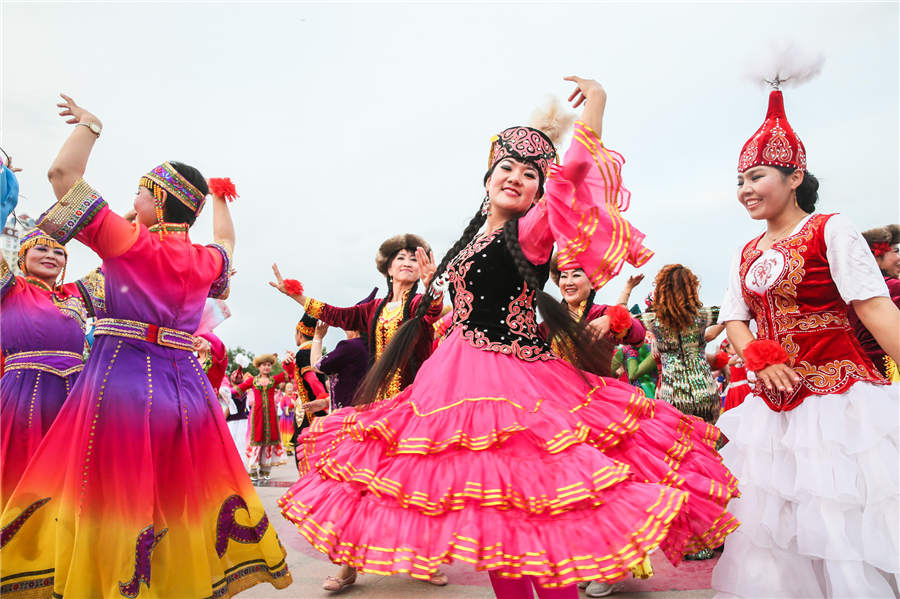Tacheng City serves as Silk Road: hub that connects Asia with Europe

Different ethnic groups in Tacheng perform their traditional dances at the cultural event “Tacheng: The Flower Blooms.”
Located on the border area of northwestern China, Tacheng is a city in the northern Ili Kazak Autonomous Prefecture in the Xinjiang Uyghur Autonomous Region. Each year on May 20, the cultural festival “Tacheng: The Flower Blooms” has been held in Tacheng since 2006. During this time, wildflowers are in full bloom, cover many mountains in the area. The annual festival features traditional Kazak handicrafts, including embroidery, saddle making, dombra making and pyrograph, as well as traditional Kazak dance and sports.
Tacheng is a hospitable place. In total, 29 ethnic groups live there, with a combined population of 977,000 people. These groups include the Han, Kazak, Hui, Uyghur and Mongol. Various ethnic groups live in harmony in Tacheng, and it is a typical example of ethnic group exchanges and integration in China.
According to a report in the Xinjiang Daily, there are 270,000 households in Tacheng, 7.5 percent of which contain members from two or more ethnic groups. And in the urban area, this proportion exceeds 20 percent. Ethnic integration and unity exist in every Tacheng family. In fact, on a regular Tacheng dinner table, you can see Uyghur pilaf, Kazak milk tea, Tatar pastry, Russian staple bread and other ethnic foods. During this year’s event, different ethnic groups showcased their beautiful clothing, embroidery and dancing, to those visiting to Tacheng. Mutual appreciation of different cultures among various groups is a major feature there. This event is not only a cultural festival but also an opportunity for trade and regional exchanges.
Located on the border, Tacheng is a significant hub for economic trade and cultural exchanges along the Silk Road. Zhang Qian, a diplomatic envoy in the Han Dynasty, became the first known Han to arrive at the Western Regions, including the areas of modern Xinjiang and parts of Central Asia, 2,100 years ago. The Silk Road has joined the East and West. In 2013, Chinese President Xi Jinping proposed the Silk Road Economic Belt. Tacheng as well as other areas in Xinjiang are now witnessing the best development opportunity in their history.
Since the Silk Road Economic Belt was launched, Tacheng has put forward a strategic plan to transform the city into a significant center and channel for material distribution, agricultural production and exports between China and Central Asia, in order to develop an export-oriented economy. Along with economic development, Tacheng is hoping to unleash its cultural vitality. As a hub connecting Asia and Europe, Tacheng also has a significant music culture. At the event “Tacheng: The Flower Blooms,” local artists played the accordion while people from various ethnic groups sang and danced. For Tacheng people, playing the accordion shows the beauty of the musical traditions of Kazak, Uyghur, Daur and other ethnic groups. In 2014, the Museum of Accordions, the only facility of its kind, sponsored by a private collector and supported by the municipal government, was established in Tacheng. A local Uyghur accordion musician said that in Tacheng, around 30 percent of people can play this instrument.
There is also a lot of unique architecture in Tacheng, particularly Russian architecture. For instance, the Red Mansion in Tacheng, which was constructed by a Tatar merchant in 1910, is a typical Russian building and has witnessed the history of Tacheng as an important center of trade between China and Russia.
